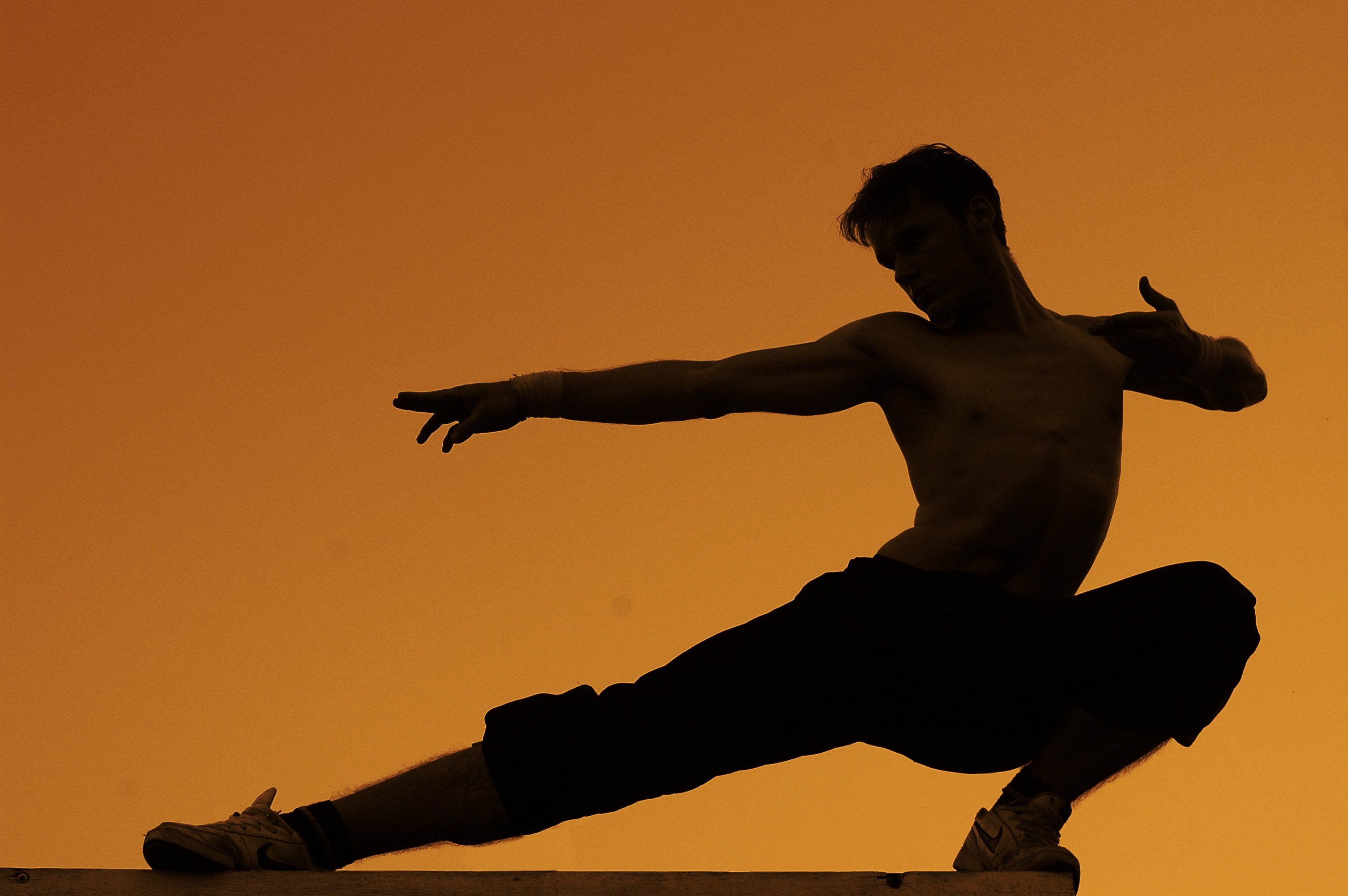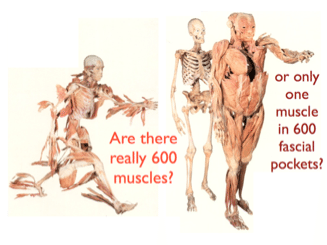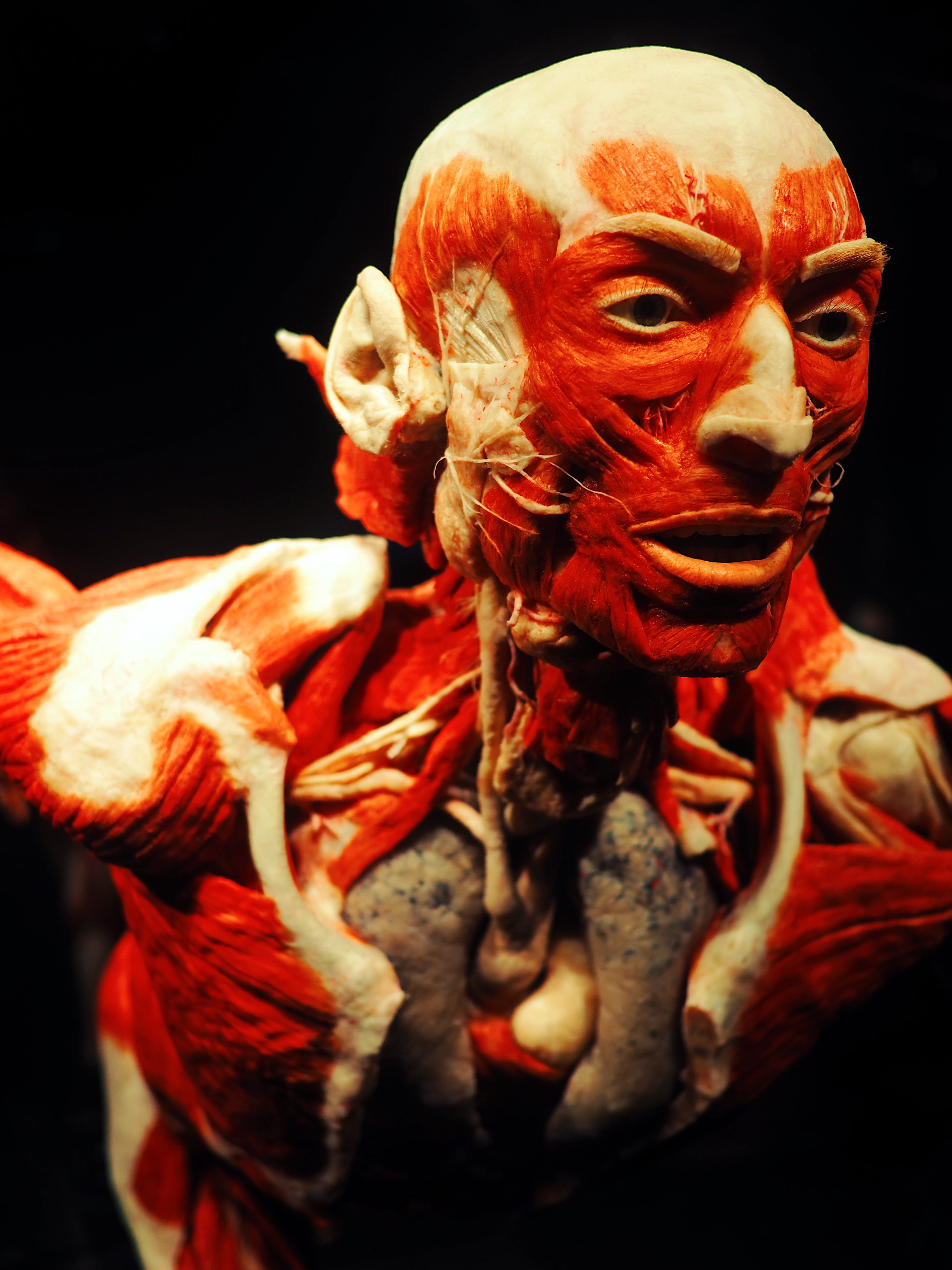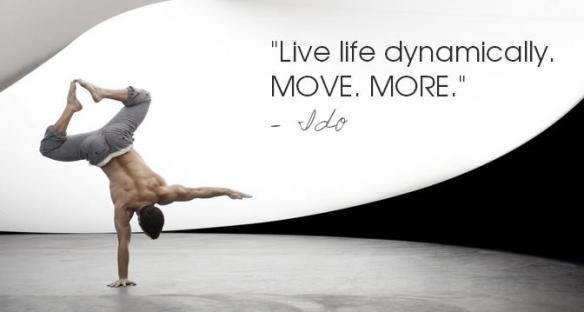Growing Pains

If I had tried this back in the day I would have fallen over.
Image Source
In grade school, I would get these shooting pains in my back that would lock me up. At one point when I was playing basketball I could barely move, my back was frozen because of something like a nerve pinch. I didn’t think much of it at the time, growing pains, but now later in my life I feel it may have been due to muscle knots, jumbled fascia, and improperly tensioned muscles.
Most of my life I’ve been sitting for long periods of time, video games, school, tv, desk job, eating. If you didn’t know, sitting and other sedentary positions are really bad for you. I think the reason it’s so bad is because muscles become dormant, losing their tension, which throws the whole system out of whack.
The reason why it isn’t just a localized event, where only one muscle is affected, is fascia.
Fascia
Most of us are familiar with muscles, but what do we know about fascia? Fascia is something I didn’t hear much about growing up, I’m not sure we really knew much about it as a collective. But lately it’s becoming a buzz word in the fitness industry, and for good reason.
Fascia connects everything.
Every muscle, ligament, organ, everything is connected by fascia. Fascia creates a complete system throughout our body, a unity, for biomechanical regulation: movement. Everything is linked in some way, which is why acupuncture and acupressure in certain areas can have a wide ranging effect.

Fascia shows unity in the body.
Image Source
One place I’ve noticed this is in my feet, I can feel how the knots in my feet link further up my legs and back. Another place is my neck, when I’m releasing knots there I can notice how my back posture improves or a face muscle needs to release with it.
Our muscles are really just names for different areas of our entire fascia system. They are great for communication, but what about for movement.
The ultimate goal of movement is neither relaxation nor tension, it is to become simple.
-DK Yoo
When we start thinking about movement or how to fix movement, we usually focus on a single area giving us the most trouble. We don't think that that one area works with the entire system, but doing so can accelerate our results drastically.

Where does one muscle end and the other begin?
(Photo by Arthur Lambillotte on Unsplash)
When we simplify things into feeling, we can learn where our muscles are dormant and where they are tense. Once we've resolved the issue and our muscles are healthy, we can start to become simple due to the way we perceive movement.
I highly recommend doing some research on fascia, I'll be leaving some links at the bottom that I sourced from.
How to Heal - Tension and Relaxation
In my own experience I've noticed incredible results in a short period of time from really basic exercises. The reason for this rapid healing was almost definitely a state of higher consciousness, as the times I've witnessed the most results were on psilocybin mushrooms. It put me in a state where the body was simplified, I could tell where I was tight or unbalanced, I could explore myself and find out why, and I could easily resolve the issues.
I realize this may be controversial, but I truly feel that improving our state of consciousness is the true key to becoming bulletproof, allowing us a clear view of our problems and solutions. This can be done in a number of ways, I recommend meditation as psychadelics are only temporary glimpses.
The few times I've hiked on psilocybin, I've witnessed amazing healing. The tension, for the most part, just melted away. And any that didn't, got worked out when I was stretching. This is the reason I now think stretching is highly underrated, it gets a bad rap because we don't know how to actually stretch. And stretching is a bad word for it, it's more like a re-engagement of muscle and a re-ordering of fascia.
The basic concept can be found in Bob Cooley's work. He calls it resistance flexibility, basically engaging your muscles through the full range of motion. I've watched a few of his videos, and his site is worth checking out, but I truly feel anyone can just use the concept to get results. This is something anyone can apply to stretching or yoga, you don't need to pay hundreds of dollars.
A Few Exercises

Ido Portal is an incredible mover and is sharing it with the world by training people to move better! Check him out!
Image Source
Every part of the fascia system has it's counter to balance it out, you flex, you extend. You rotate, you counter-rotate. So what happens when we fight ourselves? If it's just us and the ground, how do we work ourselves out? I've found pushing into a movement is an excellent way to re-engage.
A lot of work can be done with simple movement, for example being in a standing position. From a standing position, we can do a few things:
- The first place I like to start is the hip, I shift my weight to one foot and push out with my hip while trying to pull myself upright from my foot. This engages a large amount of muscle in the leg, and forces the muscles to fight/balance each other. Doing this, eventually you can find yourself upright with nearly every muscle in your leg engaged. I find it an incredible way to get your balance back and find myself in tree pose after, working my way up my back, engaging everything I can.

DK Yoo is the man, go watch some videos, usually he shares some of his wisdom about movement in them. Image Source
- Next I like to go into a squat. The problem I used to have was not engaging from the start of the movement. I'd drop 6-12 inches and make my muscles catch me. If we apply the same principle of fighting ourselves, using both the hamstrings and quads to balance eachother, we can find a ton of pent up tension being released. I find doing this works out knots better than foam rolling sometimes. I like to start the movement by kicking my butt out. Then I'm searching for muscle activation. Usually I have to bob up and down to wake the muscles up, then really press into them, especially my hamstrings. All the way down we're recruiting more muscle, by the time you get to the bottom you should feel like a loaded spring.
There are countless other "stretches" that I could go over, and maybe I will at a later date, I'd like to get some videos up for you guys if this sounds promising at all. Remember, we are fighting against the stretch by engaging muscle in the opposite way. The only things we need are gravity and a surface to push against.
It's similar to the concept of static contraction training in the way that muscles are being engaged, but you aren't going anywhere.
Here is an alternative method for re-tensioning muscle from Functional Patterns:

One thing to keep in mind is through this and other forms of exercise is:
Your body loves to be worked!
It loves pressure, it loves engagement, and it loves to move. The only reason we don't love to move is because it either hurts or it's uncomfortable. Sometimes pushing through the discomfort will increase our results, sometimes that's the only way to true results. Pain is different, self diagnose, then if necessary seek professional help.
Let's dig into ourselves and find out what's wrong! You are the only person who can TRULY know how you feel. Why are we relying so heavily on someone else to fix us?
I hope you enjoyed reading the article and found some value from it. I'd really like to hear your experiences trying out the exercises provided, and let me know what kind of videos you'd like to see! These exercises have been hugely beneficial for getting me back in a healthy place quickly.
Upvote, resteem, and follow me, @jakeybrown for more posts on consciousness, healing, family fun and more!
Fascia Info Source -
https://www.anatomytrains.com/fascia/
